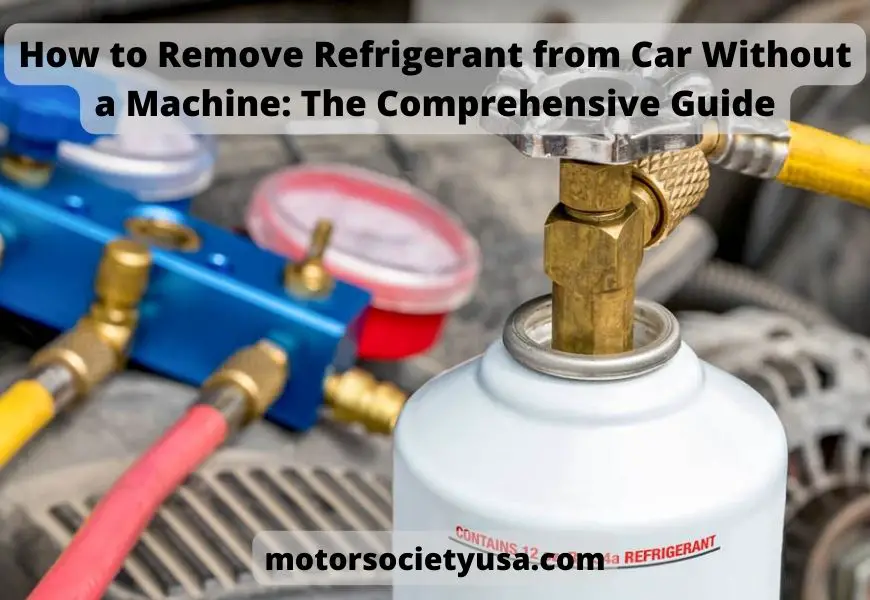How to remove refrigerant from car without a machine? The vehicle’s air conditioning system in a car plays a crucial role in ensuring passenger comfort during hot summer days. However, there may come a time when it becomes necessary to remove refrigerant from a car air conditioning, either for maintenance, repairs, or disposal purposes.
While the most common method of removing refrigerant is by using a recovery machine, there are situations where this equipment might not be readily available.
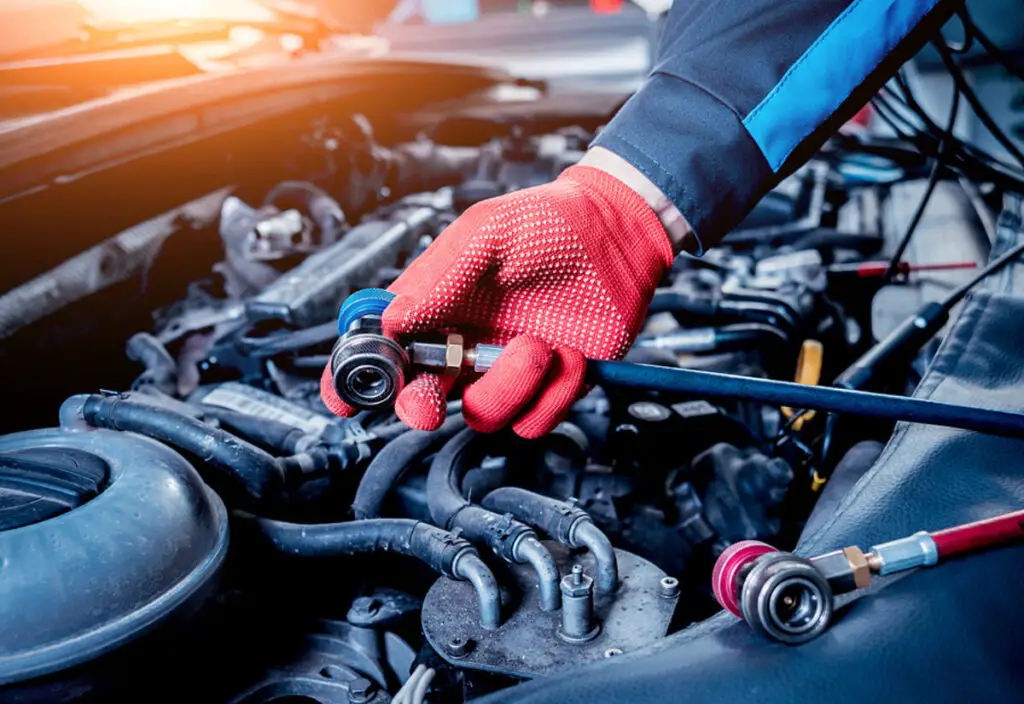
In such cases, it’s essential to understand how to remove refrigerant from a car without a machine while adhering to environmental regulations and safety guidelines.
In this comprehensive guide, we will walk you through the steps to safely and effectively remove refrigerant from a car’s air conditioner, when you have no access to a recovery machine.
We are going to explore various methods and techniques that can be employed, emphasizing the importance of proper procedures to protect both the environment and your safety.
Understanding the car’s air conditioning system
Before delving into the methods of removing refrigerant with no recovery machine, it’s crucial to have an understanding of a vehicle’s air conditioning unit working principle. The air conditioning unit, often referred to as the car’s AC unit, consists of several key components, including the air conditioning compressor, evaporator, condenser, and refrigerant lines.
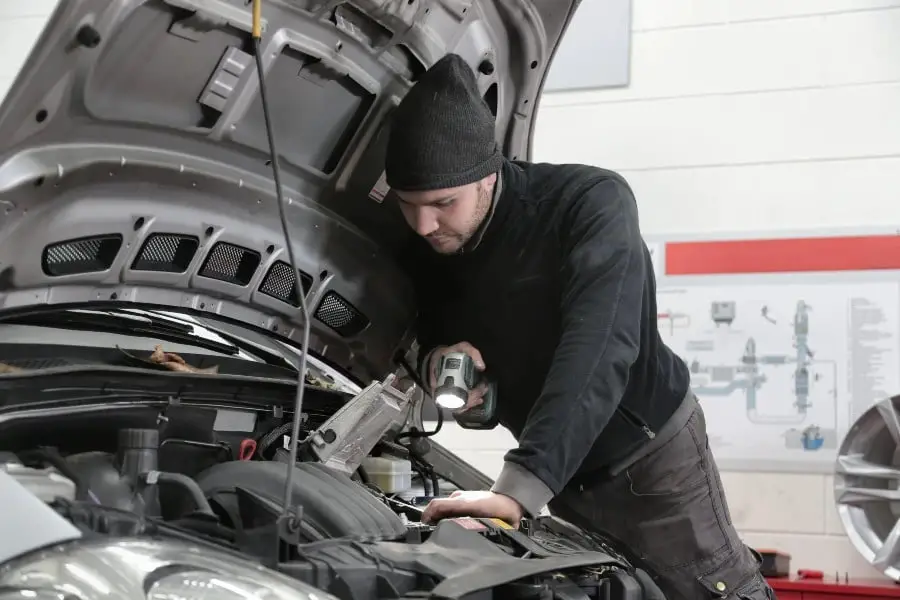
Refrigerant, typically known as liquid freon or freon gas, is the substance responsible for blowing cold air inside the car.
The purpose of the freon
Freon circulates through the AC unit, transitioning between liquid and gas phases to absorb and release heat. The AC compressor, a vital component of the system, pressurizes the refrigerant, allowing it to circulate and produce cool air.
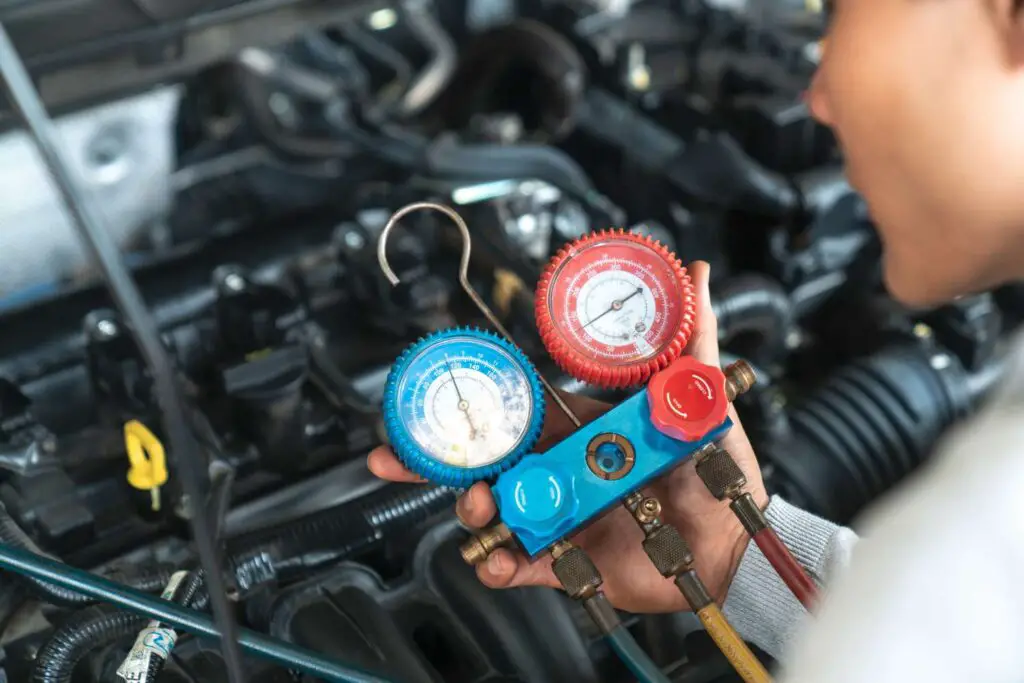
Removing freon from the car is started by accessing the low-pressure service port, which is a key component in the AC system.
This port is used to charge and remove refrigerant and is an essential part of the removal process.
Safety considerations
Removing refrigerant from a car’s air conditioner without an AC recovery machine can be potentially hazardous if not done correctly.
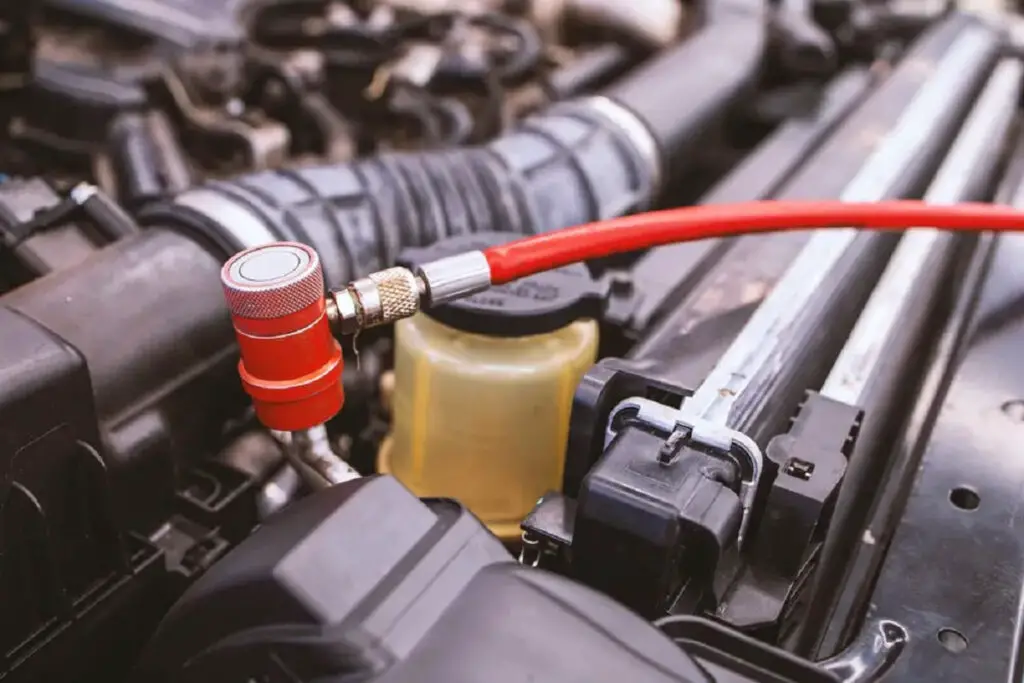
It’s imperative to prioritize safety throughout the process. Here are some safety considerations to keep in mind.
Protective clothes
Wear appropriate protective gear, including safety goggles, gloves, and a mask, to protect yourself from exposure to refrigerant.
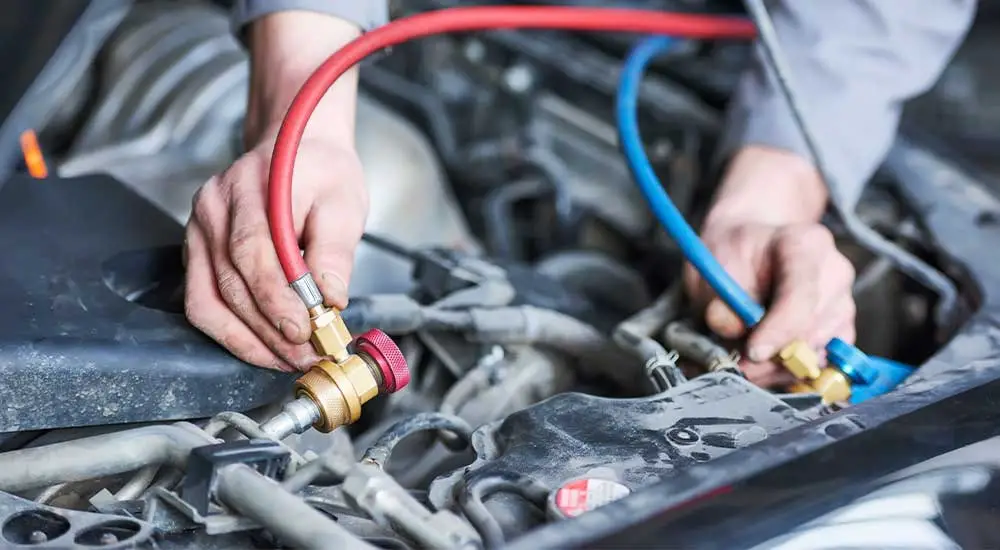
Ventilation
Work in a well-ventilated area to prevent inhaling harmful fumes.
The car’s engine
Ensure that the car’s engine is turned off and the AC unit is not running during the removal process.
Environmental aspect
Never remove freon from the car into the atmosphere, as it is harmful to the environment and may be illegal in your jurisdiction.
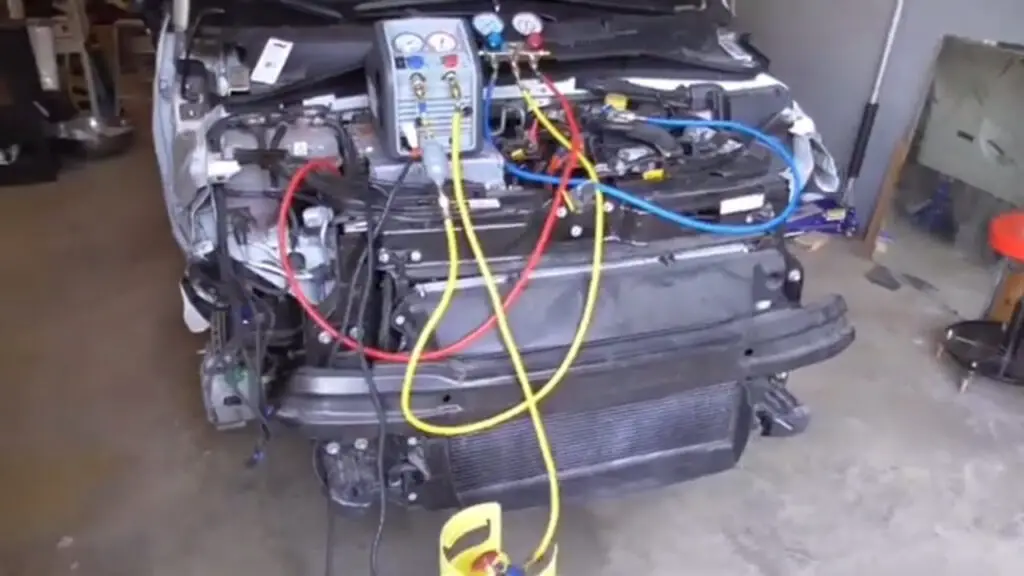
Afterward, dispose of the removed freon from the car properly by following local waste management regulations. Contact your local waste management department for guidance on how to handle and dispose of refrigerant safely.
Methods to remove freon from the car without recovery machine
Let’s explore several methods for removing freon from a car air conditioning system with no utilization of a recovery machine.
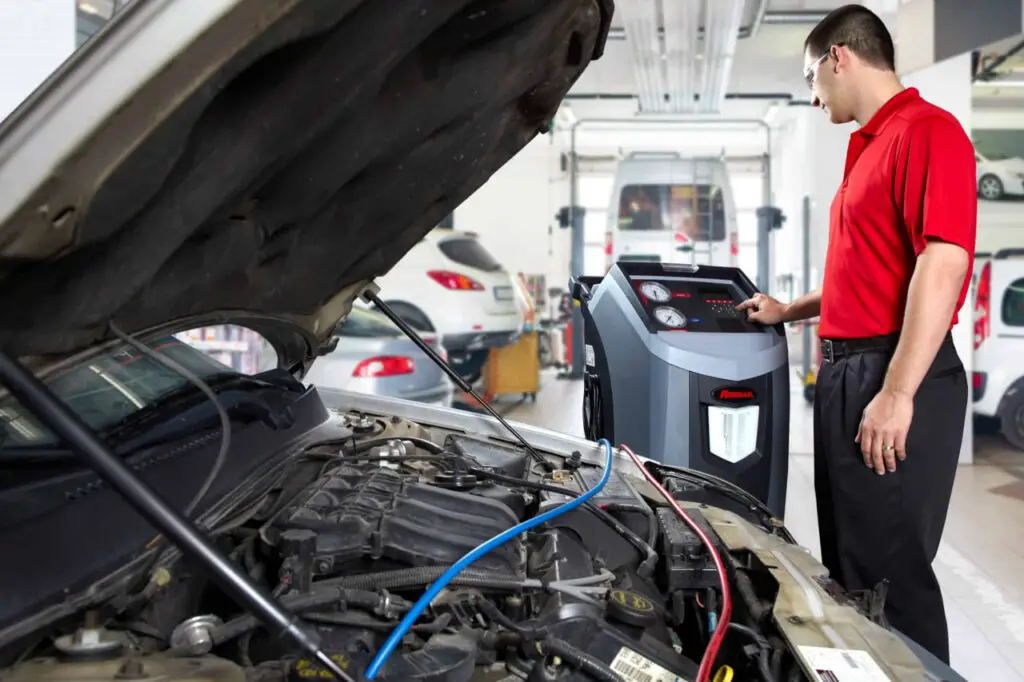
These methods vary in complexity and effectiveness, so choose the one that best suits your circumstances.
Method 1: using a vacuum pump
Safety precautions: ensure you have the necessary safety gear, as mentioned earlier.
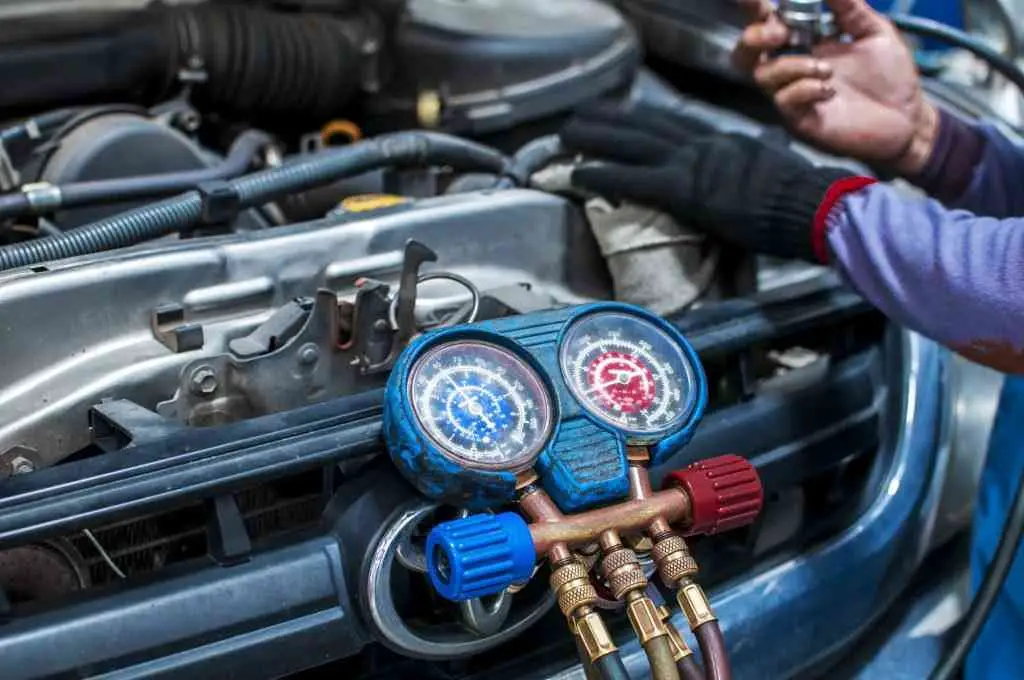
Access the low-pressure port: locate this service port in your car’s AC unit, typically found on the larger, low-pressure line.
Attachment and operation: connect a vacuum to the low-pressure port using the appropriate hose or adapter. Verify the pump’s working condition. Activate the vacuum to create a vacuum within the system, drawing out the refrigerant.
Monitoring: keep an eye on the pressure gauge on the vacuum pump. When it indicates a low pressure, signifying that most of the freon from the car has been removed, switch off the pump.
Removing freon: carefully remove freon that is left from the pressure service valve by slowly opening it. Be prepared for hissing sounds as the refrigerant escapes.
Proper disposal: collect the refrigerant in a certified AC recovery machine container and dispose of it according to local regulations.
AC unit check: after draining freon from the car, inspect the AC unit for leaks or damage before recharging it with fresh refrigerant.
Method 2: using a vacuum cleaner
Safety precautions: as previously indicated, make sure you have the required safety equipment.
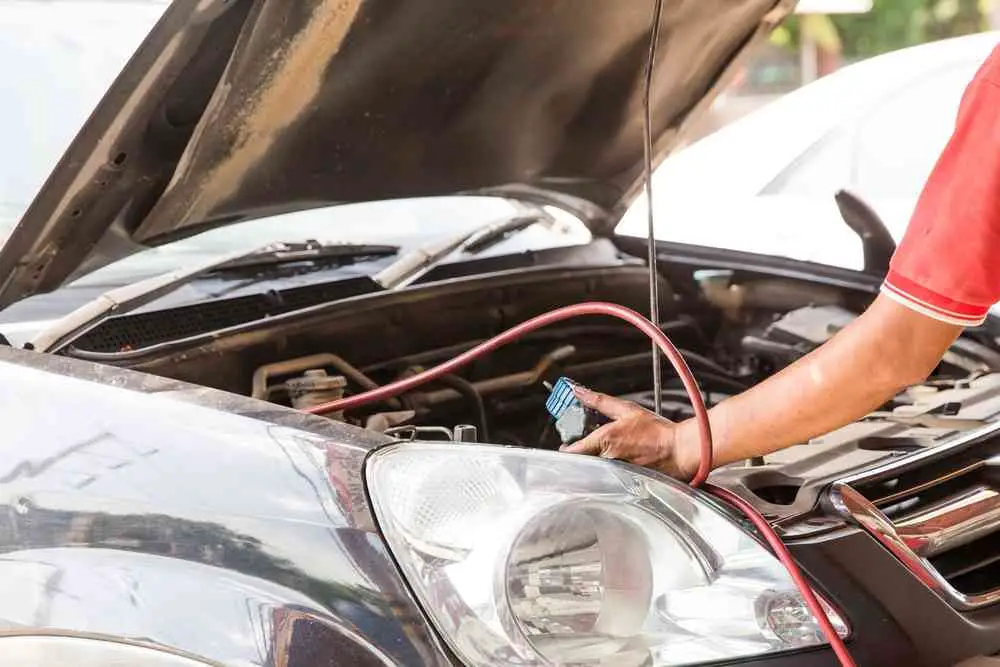
Access the low-pressure port: locate this port in the car’s air conditioners.
Modify the vacuum cleaner: you’ll need a vacuum cleaner with a hose that can fit over the pressure port. If the hose doesn’t fit, you may need to create an adapter using PVC pipe and rubber connectors.
Attach the vacuum cleaner: connect the vacuum cleaner hose to the pressure port securely.
Create a vacuum: power on the vacuum cleaner and allow it to create a vacuum within the conditioning system. The refrigerant will be drawn out as a result.
Monitor the process: monitor the pressure gauge on the vacuum cleaner. When the pressure drops, indicating that most of the refrigerant has been removed, turn off the vacuum cleaner.
Remove freon: open the valve gently and carefully remove any remaining freon. Be prepared for some hissing as the refrigerant escapes.
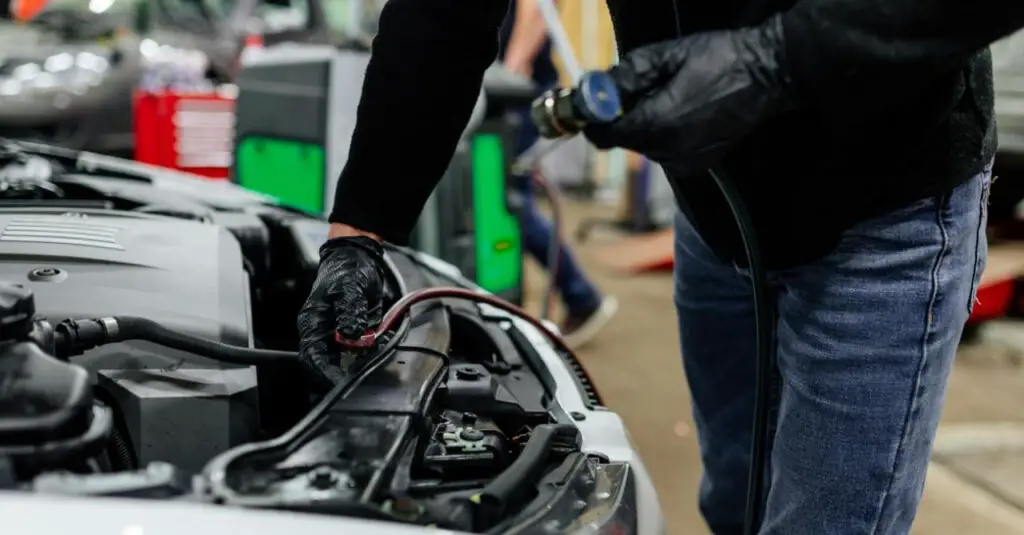
Dispose of refrigerant properly: collect the refrigerant in a certified recovery machine container and dispose of it according to the environmental regulations of your area.
Verify the conditioning system: after you remove freon from car, it’s important to check the conditioning system for any damage or leaks before recharging it with fresh freon.
Method 3: using both vacuum pump and lower voltage jumper
Safety precautions: make sure you have the required safety equipment, as was already advised.
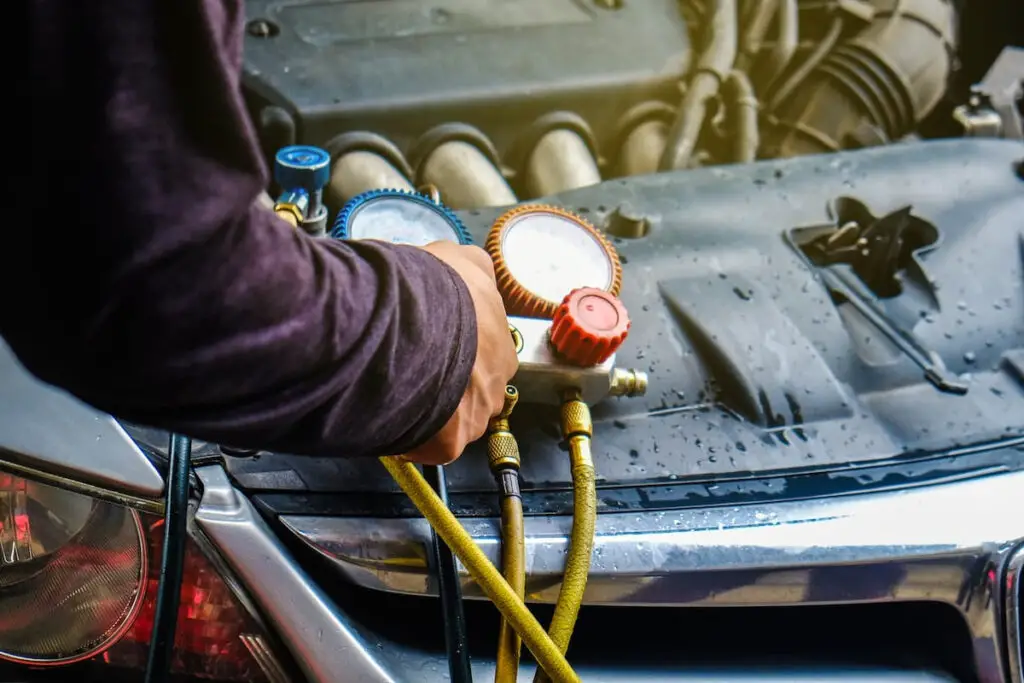
Access the low-pressure port: find the port in the car’s AC system.
Attach a vacuum: connect a vacuum to the low-pressure service port using the appropriate hose or adapter.
Create a vacuum: power on the vacuum and allow it to create a vacuum within the system. This will cause the refrigerant to be drawn out of the system and into the pump.
Lower voltage jumper: in some cases, you may need to use a lower voltage jumper to engage the AC compressor without starting the engine. This will help in removing freon more from the system.
Monitor the process: monitor the pressure gauge on the vacuum. When it reaches a low pressure, indicating that most of the refrigerant has been removed, power off the pump.
Remove freon: carefully remove freon that is left from the pressure service valve by slowly opening it. Be prepared for some hissing as the refrigerant escapes.
Dispose of refrigerant properly: collect the refrigerant in a certified recovery machine container and dispose of it according to local regulations.
Verify the conditioning system: after you remove freon from car, it’s essential to check the conditioning system for any leaks or damage before recharging it with fresh refrigerant.
Seek professional assistance
If you are not comfortable or experienced with DIY methods of removing freon from the car AC system, it is strongly advised to seek the help of an experienced car mechanic.
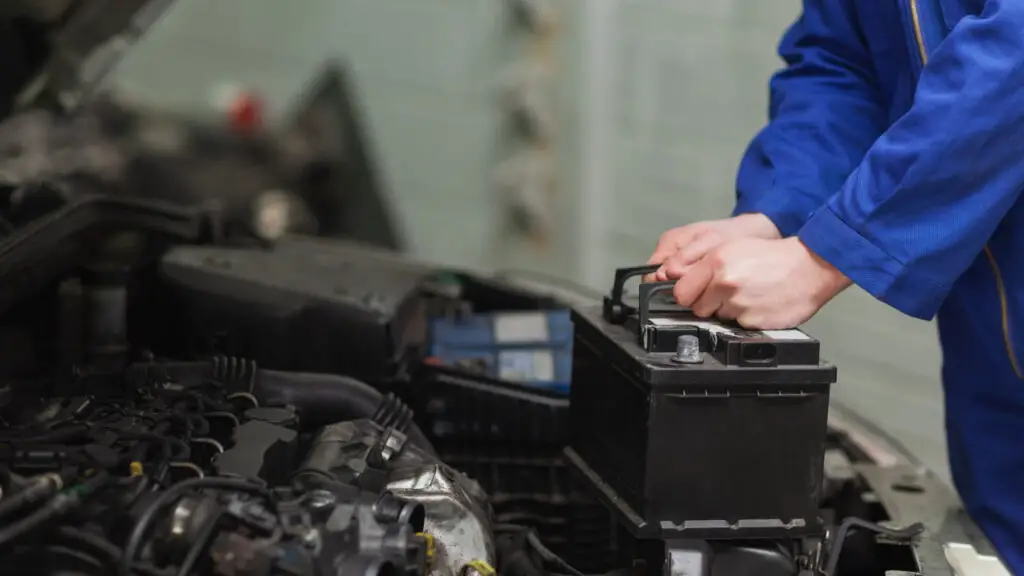
They have the knowledge, experience, and equipment necessary to safely and efficiently remove refrigerant without causing harm to you or the environment.
FAQ
Here are the most common questions asked on the topic with the following comprehensive answers to them.
Can you remove refrigerant without a recovery machine?
Yes, it is possible to remove freon from a vehicle’s air conditioning system with no recovery machine. However, the procedure needs alternative methods such as using a vacuum pump, a vacuum cleaner, or a combination of methods, as described in the comprehensive guide above.
How to recover refrigerant from a car without a recovery machine?
As it was mentioned before, to remove freon from car without a recovery machine, access the low-pressure service port in the car’s conditioning system, and attach a vacuum pump or vacuum cleaner to this port.
Furthermore, produce a vacuum to remove the refrigerant, monitor progress using a pressure gauge, carefully release any remaining freon from the valve, collect the refrigerant in a certified recovery machine container, and dispose of it following local waste management regulations.
Remember to always prioritize safety and environmental responsibility during the process.
How do you drain refrigerant from a car at home?
To drain freon from the car at home, you need to use the methods mentioned earlier, such as using a vacuum pump or vacuum cleaner. Here’s a simplified process outline:
Find the low-pressure service port in the car AC system.
To this service port, connect a vacuum cleaner or vacuum pump.
Create a vacuum within the system to remove freon from car.
When the majority of the refrigerant has been evacuated, keep an eye on the pressure gauge and shut off the pump or cleaner.
Slowly release any remaining refrigerant from the pressure valve.
Ensure you collect the refrigerant in an approved recovery machine container.
Drain freon properly, following local waste management regulations.
How do you evacuate a car AC without a pump?
Draining of freon from the car air conditioner without a pump can be challenging but can be done using alternative methods. One common method is using a vacuum cleaner. Here’s a basic outline of the procedure:
Locate the low-pressure service port on the car AC unit.
Modify the vacuum cleaner with a hose or adapter to fit over the service port.
Turn on the vacuum cleaner to create a vacuum within the AC system.
Monitor the vacuum cleaner’s pressure gauge and switch it off when pressure drops, indicating most refrigerant removal.
Release any remaining refrigerant from the low-pressure valve carefully.
Collect the refrigerant in an approved recovery machine container.
Dispose of the refrigerant in compliance with local waste management regulations.
While using a vacuum cleaner is a viable option, it may not be as efficient as using a dedicated vacuum pump. However, it can still help remove a significant portion of the refrigerant from the system.
Conclusion
Removing refrigerant from a conditioning system without a recovery machine is possible, but it requires careful planning, adherence to safety guidelines, and knowledge of the air conditioning systems. Whether you choose to use a vacuum pump, a vacuum cleaner, or a combination of methods, it’s essential to prioritize safety and environmental responsibility.
Remember that improper handling of refrigerant can lead to environmental harm and may even be illegal in some areas. Always dispose of refrigerant properly by following local waste management regulations.
If you are unsure about any aspect of the process or have concerns about your ability to complete it safely, consult with a professional vehicle mechanic who can assist you in removing refrigerant from your car air conditioner system without compromising safety and compliance.
By following the steps and safety precautions outlined in this guide, you can efficiently remove refrigerant from your car’s air conditioning unit when a freon recovery machine is not available, ensuring that your car air conditioner system remains in good working condition and that you contribute to the protection of the environment.
